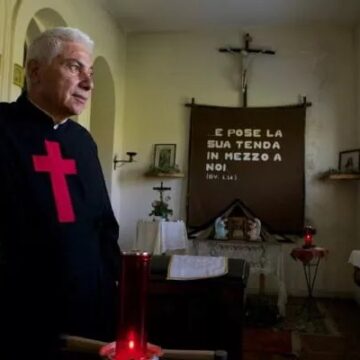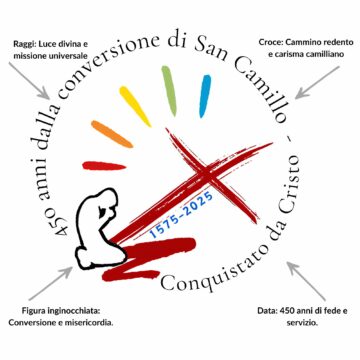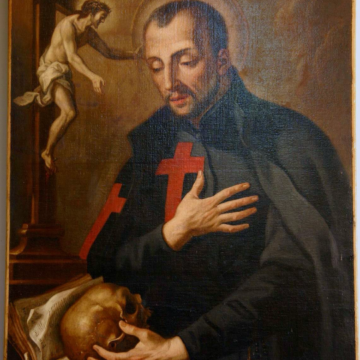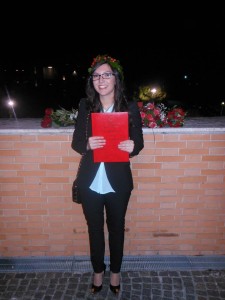 Jessica Di Lanzo is a young person from Bucchianico who recently graduated in nursing at the School of Medicine and Health Sciences of the ‘G. d’Annunzio’ University of Chieti-Pescara.
Jessica Di Lanzo is a young person from Bucchianico who recently graduated in nursing at the School of Medicine and Health Sciences of the ‘G. d’Annunzio’ University of Chieti-Pescara.
‘Camillus de Lellis: the Man, the Nurse and the Reformer’ is the title of her thesis, a study of the revolutionary innovation that St. Camillus de Lellis brought to the world of health care.
We interviewed Jessica a few days after she was awarded her degree. This is what she told us:
1. What is and what has been your relationship with St. Camillus de Lellis and how has it evolved?
St. Camillus has been an integral part of my life ever since my childhood. Indeed, when I was a little girl I lived near to the house where he was born and I often went to visit it, and I was always greatly fascinated by those places. Then for a period there was a moment of stasis until a few years ago. Today my relationship with St. Camillus has certainly evolved and grown stronger thanks to my work on my thesis which has enabled me to grow.
2. Why did you choose to write a degree thesis in St. Camillus? How did it begin?
My choice fell on St. Camillus as a result of a strong wish to know more about him and above all in order to emphasise both his human side and his vision of care. The idea of writing a degree thesis on St. Camillus had always been present, from my first year at university, when Professor Maurizio Rivera Di Renzo, who then became my supervisor, gave a lecture on the history of nursing. Amongst the very many figures who contributed to the development of nursing he also illustrated to us the work of St. Camillus de Lellis and at that moment the idea was born within me that I then put into practice.
3. What were the finest, most interesting or most surprising moments during your work on your thesis?
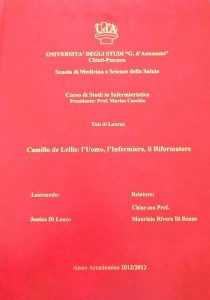 Certainly, one of the most beautiful and interesting moments was that of my bibliographical research, through which I learnt a great many details about the life and the work of St. Camillus that I did not know about. I was truly shocked when I read the dramatic and raw description provided by Cicatelli of the conditions of sick people at the time because I realised that care has not always been as we understand it today and that there was truly a need for a figure like Camillus de Lellis and for his Ministers of the Sick who achieved a radical reform.
Certainly, one of the most beautiful and interesting moments was that of my bibliographical research, through which I learnt a great many details about the life and the work of St. Camillus that I did not know about. I was truly shocked when I read the dramatic and raw description provided by Cicatelli of the conditions of sick people at the time because I realised that care has not always been as we understand it today and that there was truly a need for a figure like Camillus de Lellis and for his Ministers of the Sick who achieved a radical reform.
4. What would you say in a few lines about St. Camillus the man, the reformer and the saint?
When I try to imagine the life of a saint I imagine it as being exemplary and without any errors. Instead, the life of Camillus de Lellis shows us first and foremost that he was a man like us, with his vices, weaknesses and a life characterised by difficult moments, for example illness. Camillus teaches us that to err is human and that one should not give importance to an error in itself but to what one does after the error in order to improve oneself. He was able to change and to use his own negative experiences for the benefit of other people. I think that his wish to make a contribution was born from the fact that he experienced in the first person what it meant to be ill and when he helped other people he decided to be able and to be obliged to achieve a change, thereby implementing his reform.
5. What does St. Camillus mean for Bucchianico?
St. Camillus is an authentic source of pride for Bucchianico and its inhabitants. I as a citizen of Bucchianico am proud that one of us left here and through his work achieved such a powerful reform throughout the world. St. Camillus is Bucchianico, he represents us and he unites us. He is a support and a strength that is always present and which helps us above all else to overcome moments of difficulty. I will never be able to forget the atmosphere that was created when his body came back from Rome to his native land, here. It was as though a father, a brother, a friend had returned. We were all there united around him, all the hostilities and problems seemed to have vanished completely. It would be beautiful to live, recreating that atmosphere every day, without having to have his body here, because I am convinced that he is always alive and present here in his Bucchianico.
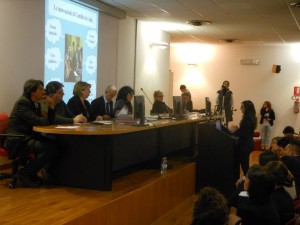 6. How are the Camillians seen in Bucchianico?
6. How are the Camillians seen in Bucchianico?
The Camillians are an integral part of our community and carry on the work and the teachings of St. Camillus, not only in Bucchianico or Italy but throughout the world. Like St. Camillus they dedicate themselves to physical but able all else to spiritual care of the sick. They are present not only for the sick but also for all those people in the community who need help.
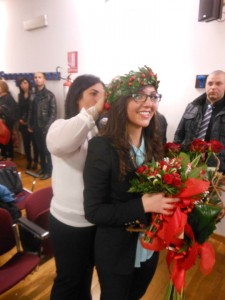 7. What does St. Camillus mean for you?
7. What does St. Camillus mean for you?
For me St. Camillus is an example from which to draw great teachings in practising my profession. He has taught me not to concentrate exclusively on the illness, but, rather, also on the person, attending to his or her biological, psychological and social aspects, in order to improve the procedures of care; to utilise inventiveness in order to find new solutions to the innumerable problems that can arise in the practice of my profession; and the importance of training and constant updating. But the most important teaching that I will always try to put into practice is to put ‘m ore heart in those hands’ in providing care to the sick.
8. Do you think that his message is still valid today? What can St. Camillus teach today’s young people?
I am more than certain that his message is still valid today, indeed it is more than ever of contemporary relevance. Today, as was the case then, we need a change because our society is characterised by a deep crisis which is both economic and spiritual in character. St. Camillus through his work can teach the young people of today that a reform does not always come from above, as Camillus well demonstrated, it can also come from the grassroots, from the strength and the will of ordinary people. Thus we young people, as well, in our small world, can achieve a reform by taking St. Camillus as an example.
[Leggi la rassegna stampa delle attività per il IV Centenario]



